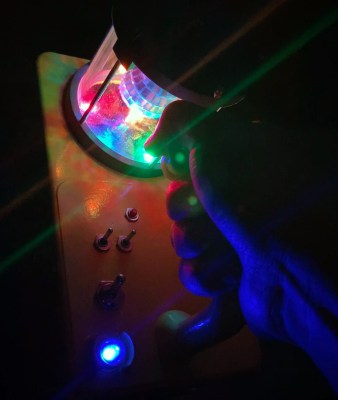Modern DSLR cameras are incredible pieces of technology that can take excellent high-quality photos as well as record video and audio. However, as they become jacks of all trades they risk being masters of none, and the audio quality in modern DSLRs certainly reflects that old cliche. To get true high-quality audio while recording with a camera like this Canon 80d, you’ll either need a secondary audio recording device or you’ll need to interface one directly into the camera itself.
This build from [Tony] aka [Carnivore] goes into the inner workings of the camera to add an audio mixer to the camera’s audio input, allowing for multiple audio streams to be recorded at once. First, he removed the plastic around the microphone port and attached a wire to it that extends out of the camera to a 1/8″ plug. While he had the case open he also wired a second shutter, added a record button to a custom location on the front of the camera, and bypassed a switch which prevents the camera from operating if the battery door isn’t closed.
With those modifications in place, he removed the internal flash from the camera before closing the body. A custom 3D printed mount was placed in the vacant space which now houses the audio mixer, a SR-AX100 from Saramonic. This plugs in to the new microphone wire from earlier in the build, allowing the camera to have an expanded capacity for recording audio.
While [Tony] has a fairly unique use case for all of these modifications to an already $1000 camera, getting into the inner workings of DSLRs isn’t something to shy away from if you need something similar done. We’ve even seen modifications to cameras like these to allow for watercooling during video recording.
Continue reading “Extensive Modification Of DSLR Includes High Quality Audio”



 While rocket boosts were out of scope for this build, [mrak_ripple] was pretty confident he could build a jumping, flipping RC car modelled after the Rocket League Octane vehicle. Initial experiments involved a custom 3D printed spring mechanism, but the results were underwhelming. Instead, in the true hacker spirit, a jumping mechanism was taken from an existing toy, and installed in the car instead. This was combined with a mechanism built out of a brushless motor with a flywheel added to generate a flipping moment in mid-air.
While rocket boosts were out of scope for this build, [mrak_ripple] was pretty confident he could build a jumping, flipping RC car modelled after the Rocket League Octane vehicle. Initial experiments involved a custom 3D printed spring mechanism, but the results were underwhelming. Instead, in the true hacker spirit, a jumping mechanism was taken from an existing toy, and installed in the car instead. This was combined with a mechanism built out of a brushless motor with a flywheel added to generate a flipping moment in mid-air.















